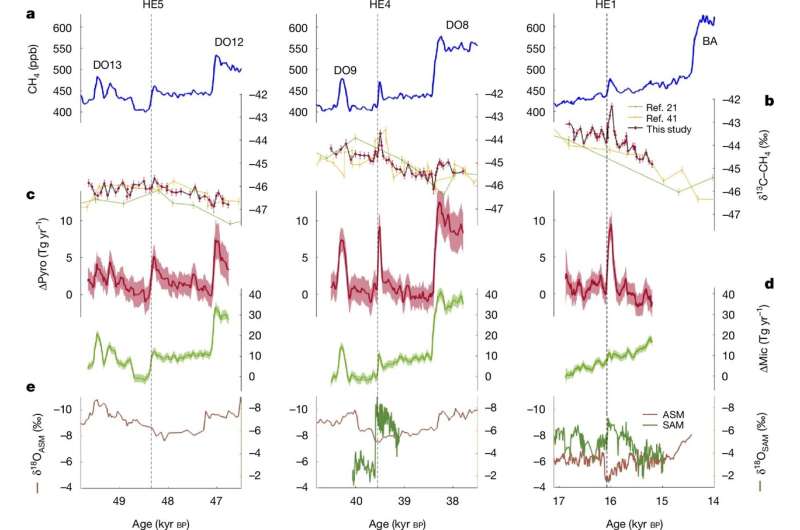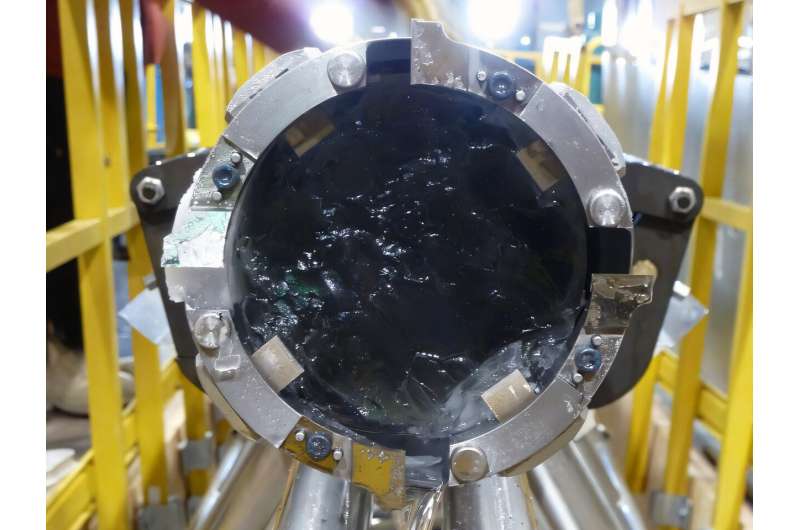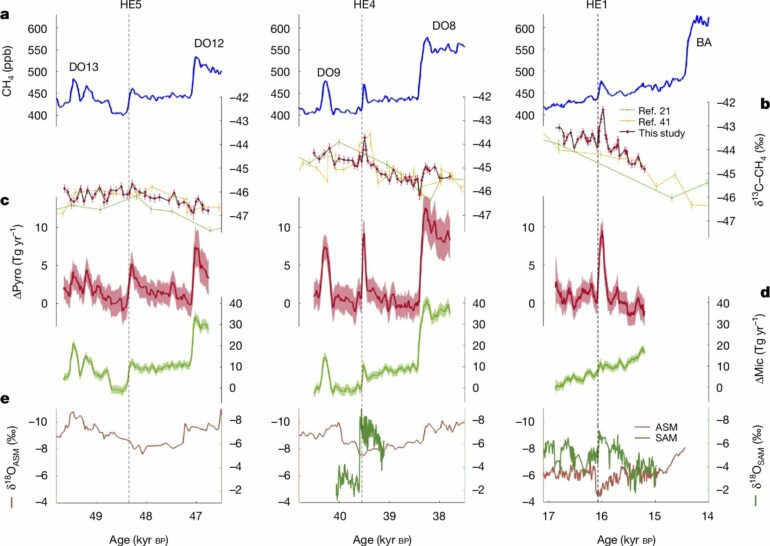A new study investigating ancient methane trapped in Antarctic ice suggests that global increases in wildfire activity likely occurred during periods of abrupt climate change throughout the last Ice Age.
The study, just published in the journal Nature, reveals increased wildfire activity as a potential feature of these periods of abrupt climate change, which also saw significant shifts in tropical rainfall patterns and temperature fluctuations around the world.
“This study showed that the planet experienced these short, sudden episodes of burning, and they happened at the same time as these other big climate shifts,” said Edward Brook, a paleoclimatologist at Oregon State University and a co-author of the study. “This is something new in our data on past climate.”
The findings have implications for understanding modern abrupt climate change, said the study’s lead author, Ben Riddell-Young, who conducted the research as part of his doctoral studies in OSU’s College of Earth, Ocean, and Atmospheric Sciences.
“This research shows that we may not be properly considering how wildfire activity might change as the climate warms and rainfall patterns shift,” said Riddell-Young, who is now a postdoctoral scholar at the Cooperative Institute for Research in Environmental Sciences at the University of Colorado, Boulder.

δ13C–CH4 for HE5 and DO12, HE4 and DO8 and HE1. © Nature (2025). DOI: 10.1038/s41586-024-08363-3
Ice that built up in Antarctica over tens to hundreds of thousands of years contains ancient air bubbles. Scientists use samples of that ice, collected by drilling cores, to analyze the gases preserved in these bubbles and build records of the Earth’s past climate.
Previous research has shown that levels of atmospheric methane, a greenhouse gas, spiked during abrupt climate change periods during the last Ice Age, which ended about 11,000 years ago. These abrupt climate change events, known as Dansgaard-Oeschger and Heinrich events, were associated with rapid regional temperature changes and shifting rainfall patterns, as well as spikes in atmospheric methane. The goal of the study was to try to determine what caused those spikes.
“These spikes were notable because of how quickly the methane levels changed during these periods,” Riddell-Young said.
Riddell-Young used samples from the two-mile long Western Antarctic Ice Sheet Divide Ice Core and a replicate core collected with a specialized drill that reenters the core and borehole and collects more ice. The records in those cores date back 67,000 years.
“Because this ice is in a place where the annual snowfall rate is high, the record doesn’t go back as far in time as other ice cores, but you get more ice for each year, and you can better see the detail in those years,” said Brook, a professor in OSU’s College of Earth, Ocean, and Atmospheric Sciences.

© Oregon State University
Riddell-Young used a system he designed to extract the air from ice samples and then used a mass spectrometer to measure the isotopic composition of the methane, which can indicate the sources of atmospheric methane.
Discover the latest in science, tech, and space with over 100,000 subscribers who rely on Phys.org for daily insights.
Sign up for our free newsletter and get updates on breakthroughs,
innovations, and research that matter—daily or weekly.
The measured isotopic changes suggest that the spikes in methane were caused by methane emissions from an increase in wildfires globally, Riddell-Young said.
“These fire events were likely one of the cascading impacts resulting from what triggered the abrupt climate change event,” he said.
“It probably went something like: Ocean currents slowed down or sped up rapidly, the northern hemisphere cooled or warmed rapidly, and then this caused abrupt shifts in tropical rainfall that lead to increased drought and fire.”
Past research has suggested that shifts in temperature and tropical rainfall were associated with these abrupt climate change periods, but the new study provides the first good evidence that fire was also a feature of these periods, Brook said.
Additional research is needed to better understand the role these periods of burning may have in climate patterns, Brook said. For example, burning produces atmospheric CO2, another greenhouse gas, which also contributes to climate warming.
“Understanding what this burning really means for the carbon cycle is one of the places the research is headed next,” he said.
More information:
Ben Riddell-Young et al, Abrupt changes in biomass burning during the last glacial period, Nature (2025). DOI: 10.1038/s41586-024-08363-3
Provided by
Oregon State University
Citation:
Wildfire activity surged during Ice Age’s abrupt climate shifts, study suggests (2025, January 2)



